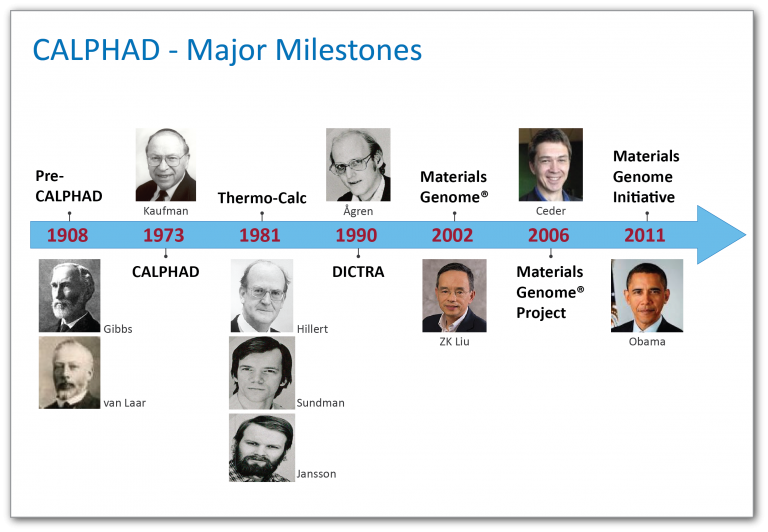As shown in the image above, taken from Dr Chen’s presentation, CALPHAD assumes a pivotal role in materials design. It acts as a unifying technology capable of integrating data from Density Functional Theory (DFT) calculations and experimental data to predict thermodynamics, phase equilibria, and diffusion and precipitation kinetics in multicomponent materials. Such predictions, can then be used to provide composition and temperature dependent data as input to other models and codes in an ICME framework that deal with more of the macroscopic behaviour where typically such data are lacking.
As technology continues to advance, imposing ever greater demands on the discovery and optimization of new materials, the reliance on computational materials engineering will inevitably intensify. In this evolving landscape, the significance of CALPHAD will only continue to expand.
To learn more about the history of CALPHAD, read our Historic Note series, which tells the story of CALPHAD through the lens of the people who made the discoveries.


